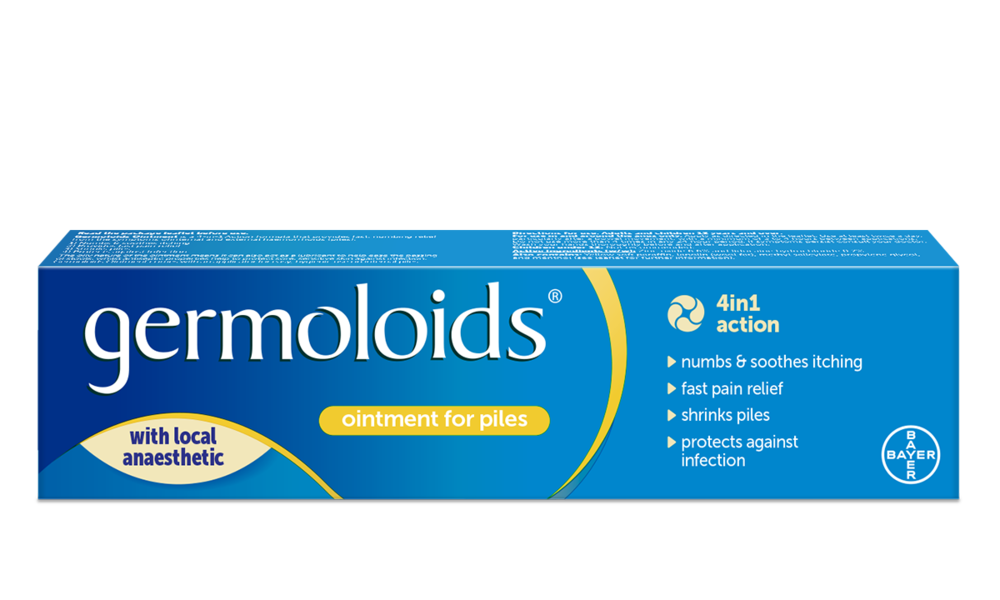Piles in men: Symptoms & causes
Piles, also known as haemorrhoids, are common among men and can appear as a number of symptoms, including bright red blood when you go to the toilet, lumps around the anus, as well as pain and itchiness. Over-straining on the toilet or over-exerting yourself at the gym could contribute to the development of piles, but treatment and relief is available in a variety of formats.
What are the symptoms of piles in men?
If you’re experiencing pain or itching in and around the anus, bright red blood on the tissue after you pass a stool, mucus on your underwear, or sensitive lumps around your anus, you may be suffering from a common condition known as haemorrhoids, also known as piles.
The condition can occur in both men and women and it’s estimated that around 3 out of 4 of us will get piles at least once in our lives.
Haemorrhoids are actually a completely normal part of the human anatomy and typically act as buffers around the bottom to help control our bowel movements and make them pass more easily. They are filled with lots of blood vessels and it’s when they become swollen, often from too much pressure or straining, that haemorrhoids can become bothersome and make themselves known.
Depending on the type of haemorrhoids you have, you may experience different symptoms ranging in severity:
▶Internal piles occur deeper inside the anal canal and you may only identify them if you see bright red blood when you go to the toilet.
▶External piles, on the other hand, are those that appear closer to the surface of the skin of the anus and are often much more sensitive and painful. You may be able to feel these as lumps when you’re going to the toilet.
▶Prolapsed piles are internal or external haemorrhoids that have become exposed and come out of the anus. These can be particularly painful and sensitive.
▶Thrombosed piles are also often very painful and are usually external haemorrhoids that have developed blood clots.
Although piles often pass on their own after a few days, if left untreated, it’s possible that symptoms can worsen, especially if the root cause of the problem isn’t addressed.
What causes piles in men?
There are lots of different possible causes of piles, many of which we can manage in order to prevent their recurrence. However, it is also a natural part of the aging process as the tissue around our blood vessels grows weaker.
Here are a few of the more common causes of piles:
STRAINING AND CONSTIPATION
A common cause of haemorrhoids in men is straining too much when on the toilet and the reasons for this are two-fold. For one, sitting on the toilet for extended periods of time causes the anus to relax and blood to flow into the haemorrhoids. Secondly, excessive straining (often caused by constipation) can put too much pressure on the veins and blood vessels around the anus, causing them to swell up and sometimes bleed. Making sure that you drink plenty of water and eat a balanced diet can help if you suffer with constipation.
NOT ENOUGH FIBRE IN YOUR DIET
A diet lacking in fibre is also a very common cause of haemorrhoids. Fibre helps to maintain a softer consistency of our stools, so when we are low in fibre, we’re much more likely to become constipated and spend too long over-straining on the toilet. In order to help reduce your likelihood of developing piles, you could try to eat more fibre as part of a balanced diet.
OBESITY
Since pressure on the blood vessels is a common cause of haemorrhoids, it’s probably not surprising that carrying excess weight can be another factor that can make developing piles more likely. Regular exercise, whether it’s a brisk walk at lunchtime or session at the gym, can help in more ways than one. Aside from helping to burn off the calories, it plays an important role in healthy digestion, helping to keep things moving and reducing the likelihood of constipation.
How do you treat haemorrhoids?
Haemorrhoids are usually easily treated, either through making simple changes to your lifestyle as we’ve talked about, or through over-the-counter creams, ointments and suppositories, like Germoloids, which help to numb the pain and itching as well as shrink piles.
Sometimes, if other methods of treatment have not been effective, your doctor may recommend other surgical or non-surgical treatments to remove them, however, this is usually only for very large and painful haemorrhoids.
If you think you might have piles, it’s worth going through your symptoms with your local pharmacist so they can help you find a suitable treatment and make sure that the symptoms are not a sign of anything more serious.




